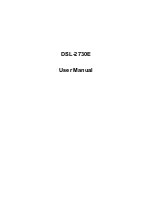A N 9 3
138
Rev. 1.4
5.15. V.80 Mode
As shown in Table 99, the synchronous access mode is chosen by using the AT+ES=6,,8 command setting.
When using the synchronous access mode, it is expected that the AT\N0 command will be used to disable all other
error correction protocols that may interfere with V.80 synchronous access mode operation.
The V.80 Mode has two distinct submodes. Switching between these two submodes can be accomplished within
the confines of the same connection through the use of In-Band commands. The submodes are:
Transparent Submode
Framed Submode
The Transparent Submode creates a direct bit-by-bit translation from the DTE to and from the DCE. Any
application that requires a method of reconstructing a serial bit-stream at the DCE can use the Transparent Sub-
mode.
The Framed Sub-mode represents data at the DCE in HDLC/SDLC frames. This submode is typically used in
point-of-sale terminals. A common feature used in conjunction with the Framed Submode is the use of the 16-bit
CRC. When used with the CRC option, the Framed Submode can be used in the same applications currently using
the Legacy Synchronous DCE Mode.
Prior to sending the ATDT to establish a synchronous access mode connection, the following commands and
registers require initialization: +MS, +ES, +ESA, +ITF, +IFC, U87, and U7A.
As an example, the closest equivalent to the Legacy Synchronous DCE Mode is the following initialization setting.
With either Synchronous Access Submode, once a connection has been established, payload data are multiplexed
with command/indicator information by use of <EM> shielding. With <EM> shielding, either of the two bytes
<0x19> or <0x99> (used to represent <EM>) precedes a special command or special indicator.
Synchronous access mode <EM> shielding is designed to support XON/XOFF handshaking. As such, the bytes
0x13 and 0x11 (XON/XOFF) are considered to be special characters in the same way the 0x19 and 0x99 bytes,
used for <EM>, are special.
Since the payload data are multiplexed with <EM> shielded command/indicator and possibly XON/XOFF
characters, Transparency <EM> codes are defined for the purpose of allowing the host software to send 0x13,
0x11, 0x19 and 0x99 bytes to/from the DCE. For example, if one <0x99> character needs to be sent as payload,
the host software sends <EM><0x76> instead. For a complete list <EM> commands and statuses, see Table 100.
Table 99. Synchronous Access Mode Settings
AT\N0
Required to disable MNP,V.42
and other protocols
AT+ES = 6,,8
Enable synchronous access
mode on originate or answer
AT+ESA = 0,0,0,,1,0
Send Abort on underrun/over-
run in Framed Submode.
Enable CRC generation and
checking.
AT+IFC = 2,2
CTS/RTS Flow Control
AT+ITF = 0383,0128
Controls CTS Flow Control
Threshold. CTS off at 383
bytes, CTS On at 128 bytes.
AT:U87,050A
Direct to Framed Sub-mode
upon connection. DCE starts
to transmit upon receipt of 10
bytes from the DTE.
Содержание Si2404
Страница 2: ...AN93 2 Rev 1 4 ...
Страница 27: ...AN93 Rev 1 4 27 Figure 7 Parallel Interface Read Timing Figure 8 Parallel Interface Write Timing ...
Страница 200: ...AN93 200 Rev 1 4 Figure 31 TAM Handset and Speakerphone Voice Paths ...
Страница 201: ...AN93 Rev 1 4 201 Figure 32 Si3000 Codec Gain and Signal Selection Options ...
Страница 290: ...AN93 290 Rev 1 4 Figure 57 256 Band Spectral Display Figure 58 2048 Band Spectral Display ...
Страница 305: ...AN93 Rev 1 4 305 Figure 76 Parallel or SPI Port Interrupt Service Flowchart ...


















